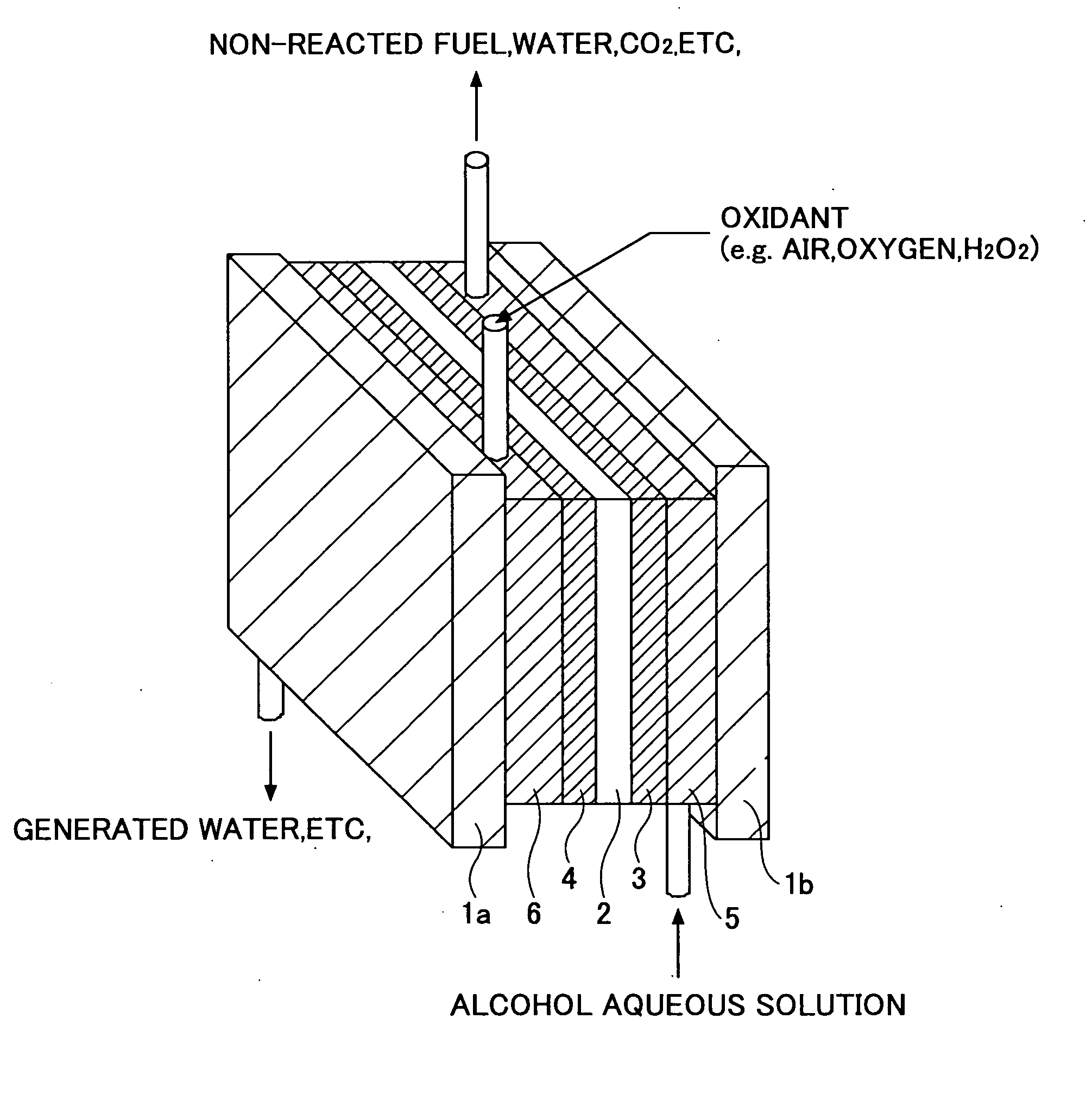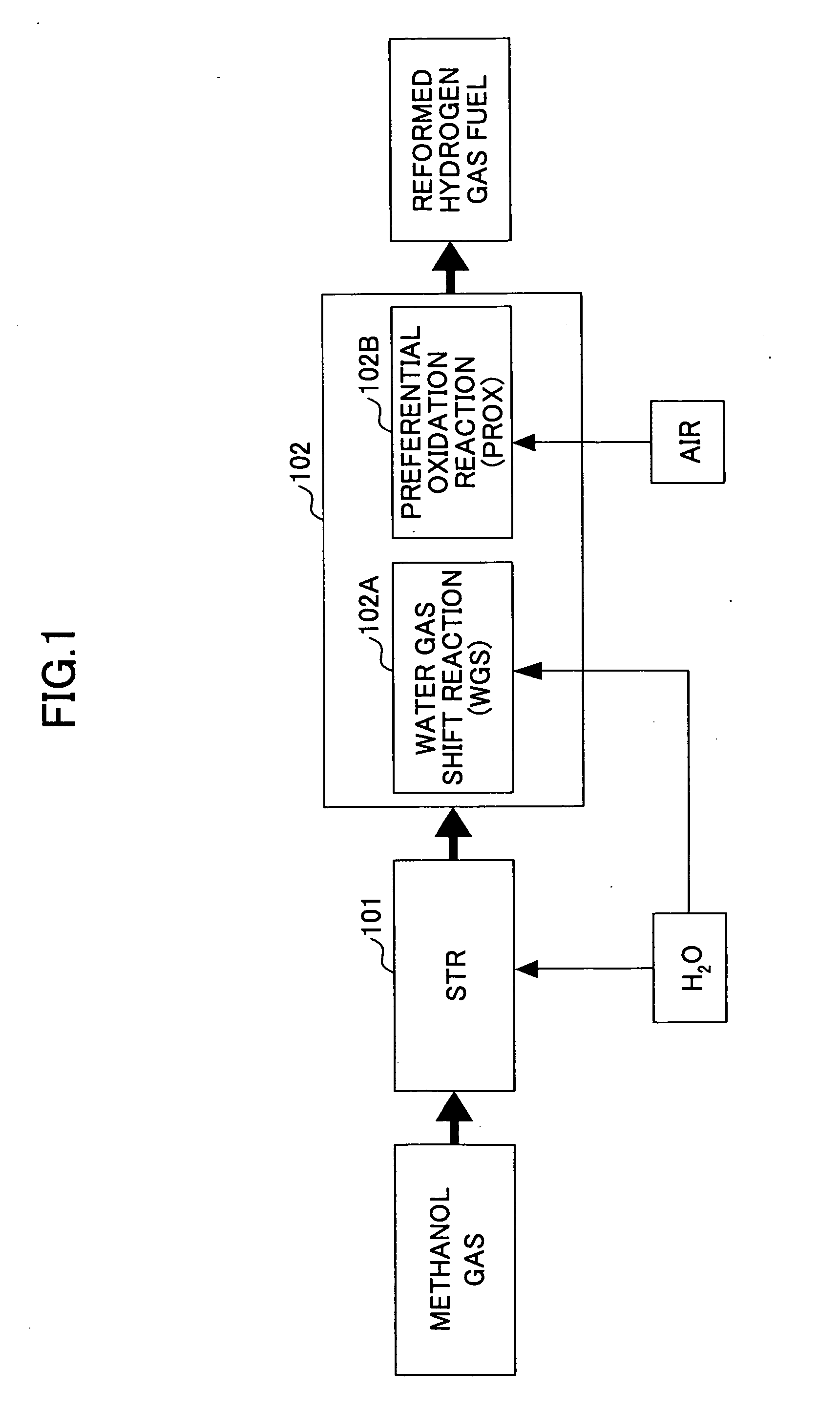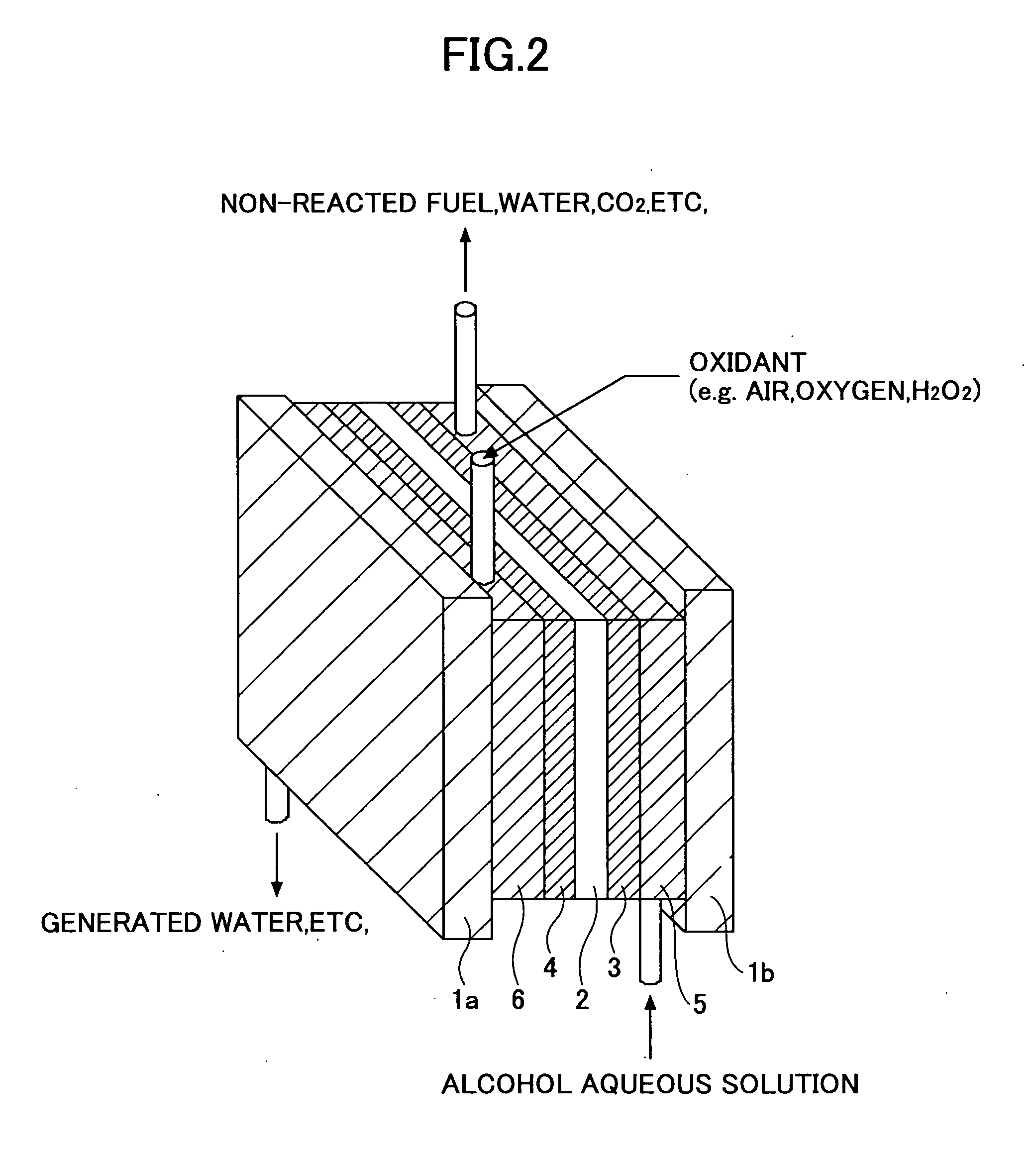Electrode Catalyst, Method for Preparation Thereof, Direct Alcohol Fuel Cell
a technology of electrode catalyst and fuel cell, which is applied in the direction of cell components, final product manufacturing, sustainable manufacturing/processing, etc., can solve the problems of unsuitable personal applications such as miniature portable electronic devices, polymer electrolyte fuel cells may not be effectively used, and problems to be solved, etc., to achieve superior resistance to catalyst poisoning, reduce overvoltage, and increase current density
- Summary
- Abstract
- Description
- Claims
- Application Information
AI Technical Summary
Benefits of technology
Problems solved by technology
Method used
Image
Examples
first embodiment
[0131]FIG. 3 is a diagram showing a configuration of a polymer electrolyte fuel cell (PEFC) 20 according to a first embodiment of the present invention. It is noted that in FIG. 3, components that are identical to those shown in FIG. 2 are given the same reference numerals, and their descriptions are omitted.
[0132] As is shown in FIG. 3, the polymer electrolyte fuel cell 20 has a similar configuration to that of FIG. 2, but uses an anode 3A that includes an electrocatalyst for direction oxidation of alcohol according to an embodiment of the present invention as an active constituent.
[0133] Specifically, according to the first embodiment of the present invention, an electrocatalyst for direct oxidation of alcohol that includes a mixture of platinum and a substance including at least one of molybdenum and a molybdenum compound as an active constituent is used as the anode 3A.
[0134] In the following, preferred ranges of the atom ratio between platinum and non-platinum elements conta...
second embodiment
[0144]FIG. 4 is a diagram showing configuration of a polymer electrolyte fuel cell 30 according to a second embodiment of the present invention. It is noted that in FIG. 4, components that are identical to those shown in the previous drawings are given the same reference numerals and their descriptions are omitted.
[0145] As is shown in FIG. 4, the fuel cell 30 has a flat rectangular configuration and includes a fuel supply channel 5 that is arranged to partition the internal space of the fuel cell 30 into upper and lower sections. The fuel cell 30 also includes a liquid fuel accommodating part that includes a container 7 shaped into a cylinder, for example, and is detachably arranged in the fuel cell 30.
[0146] The container 7 has a small hole 7a arranged at its side face so that fuel accommodated within the container 7 may be supplied to the fuel supply channel 5 via the small hole 7a. The small hole 7a is sealed by predetermined sealing means (not shown) before the container 7 is...
third embodiment
[0155]FIG. 5 is a diagram showing a configuration of a polymer electrolyte fuel cell 40 according to a third embodiment of the present invention.
[0156] As is shown in FIG. 5, the fuel cell 40 is realized by constructing a cell by arranging a membrane-electrode assembly (MEA) similar to that of FIG. 3 made up of an anode 3A, a cathode 4, and an ion exchange membrane 2 between porous films corresponding to a liquid fuel circulating part 5 and a oxidizer circulating part 6, arranging bipolar plates 41 and 42 made of fine carbon, for example, on the upper and lower sides of the cell, and stacking the resulting cell structures one on top of the other. It is noted that the anode 3A used in the present fuel cell structure may include the electrocatalyst for direct oxidation of alcohol according to an embodiment of the present invention as an active constituent.
[0157] In FIG. 5, an alcohol fuel supply channel is arranged to penetrate through the stacked cell structure so that the alcohol ...
PUM
| Property | Measurement | Unit |
|---|---|---|
| temperature | aaaaa | aaaaa |
| pressure | aaaaa | aaaaa |
| pressure | aaaaa | aaaaa |
Abstract
Description
Claims
Application Information
 Login to View More
Login to View More - R&D
- Intellectual Property
- Life Sciences
- Materials
- Tech Scout
- Unparalleled Data Quality
- Higher Quality Content
- 60% Fewer Hallucinations
Browse by: Latest US Patents, China's latest patents, Technical Efficacy Thesaurus, Application Domain, Technology Topic, Popular Technical Reports.
© 2025 PatSnap. All rights reserved.Legal|Privacy policy|Modern Slavery Act Transparency Statement|Sitemap|About US| Contact US: help@patsnap.com



